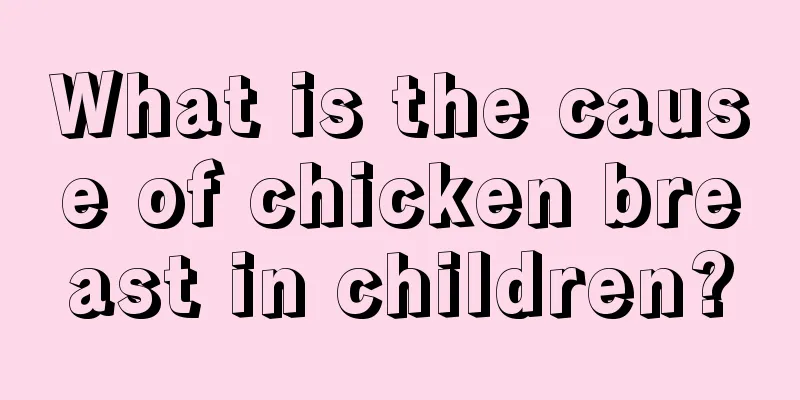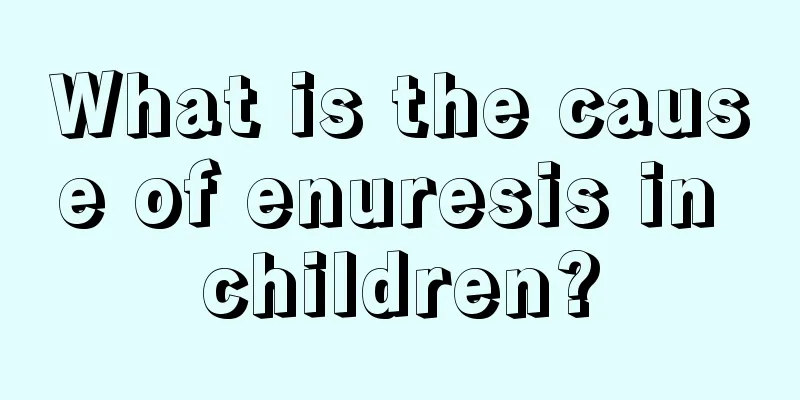What is the cause of chicken breast in children?

|
If a naughty child has pigeon chest, you should pay attention to whether it is caused by a lack of vitamin D in the body, which leads to calcium and phosphorus absorption disorders. If it is due to these reasons, you must pay attention to nutritional supplements and avoid these malnutrition diseases. Pigeon chest in children is mostly caused by rickets, that is, the body lacks sufficient vitamin D, which causes calcium and phosphorus absorption disorders, osteomalacia, and the inward depression of the connection between the chest ribs and sternum, causing the sternum to bulge forward, forming pigeon chest. This deformity often develops around 1 year old. 1. During the fetal or infant period, the unbalanced development of the sternum, spine and ribs causes chest deformity. 2. Infants and young children do not get enough nutrition after birth and suffer from certain malnutrition diseases, such as rickets in children. Over time, this can affect the development of the sternum and cause chest deformity. 3. Secondary to diseases in the chest cavity. For example, in some congenital heart diseases, the enlarged heart compresses the chest wall, forming a pigeon chest deformity. Pectus carinatum is generally believed to be related to genetics, just like pectus excavatum. Most people believe that it is caused by excessive growth of ribs and costal cartilages, and that the deformity of the sternum is secondary to the deformity of the ribs. 4. Some people believe that it is related to the abnormal development of the diaphragm attachment part. The front part of the diaphragm is underdeveloped. It is not attached to the xiphoid process and the costal arch, but to the back of the rectus sheath. During deep exhalation, the upper part of the rectus abdominis is pulled inward, and the overgrown muscles on the outer side of the diaphragm contract, deepening the Howe groove. The lower part of the sternum moves forward due to the lack of diaphragm support, resulting in a pigeon chest deformity. 5. Another group of people believe that pigeon chest deformity is related to recurrent chronic respiratory tract infections. Long-term chronic respiratory tract infections reduce the compliance of lung tissue and weaken respiratory function. In order to meet the breathing needs, the diaphragm movement is strengthened, pulling the Howe groove inward, and gradually forming pigeon chest deformity. |
<<: What to do if your child has yellow teeth? It turns out these 4 methods can improve it
>>: Tips for preventing colds in winter for children
Recommend
What are the tips for keeping healthy for children in spring?
During such a sensitive period as spring, the bod...
Will babies have constipation during the confinement period?
Holding the baby's stomach in check refers to...
What to do if you are not tall enough?
Everyone hopes that their height can reach a high...
Why is the child always making trouble?
When a child is always making a fuss, it may be b...
Symptoms of a newborn's fussiness
In our lives, there are always some babies who ar...
What should I do if my eight-month-old baby sweats when sleeping at night?
Every parent is particularly concerned about the ...
What should I do if my baby teeth haven't fallen out and new teeth have grown?
The baby teeth have not fallen out, but new teeth...
What are the dangers of milk allergy in babies?
With the improvement of living standards and the ...
What to do if the newborn's belly button bleeds
When a child is just born, the umbilical cord has...
How to train abdominal muscles for children
Everyone hopes to have eight-pack abs, six-pack a...
Symptoms of hemangioma in children
Hemangioma is a very common disease. There are ma...
Symptoms of severe calcium deficiency in babies
Children are very weak from a very young age. It ...
Should the baby take anti-inflammatory medicine if his throat is red?
When many parents find that their baby's thro...
What kind of milk can help children grow taller
Around us, I'm afraid that most girls are onl...
What should I do if my baby sucks his fingers for two months?
As the baby grows day by day, there will always b...









